Like many other states with a coast on the Atlantic Ocean, North Carolina is a popular destination for tourists and vacationers. The beaches of North Carolina are not as crowded as states to the north, but they offer just as much in terms of swimming, fishing, and boating. The state is home to a wide variety of different creatures, including a wealth of arachnids. We’ll provide a brief overview of the biggest spiders in North Carolina, so you know what to expect if you visit this area.
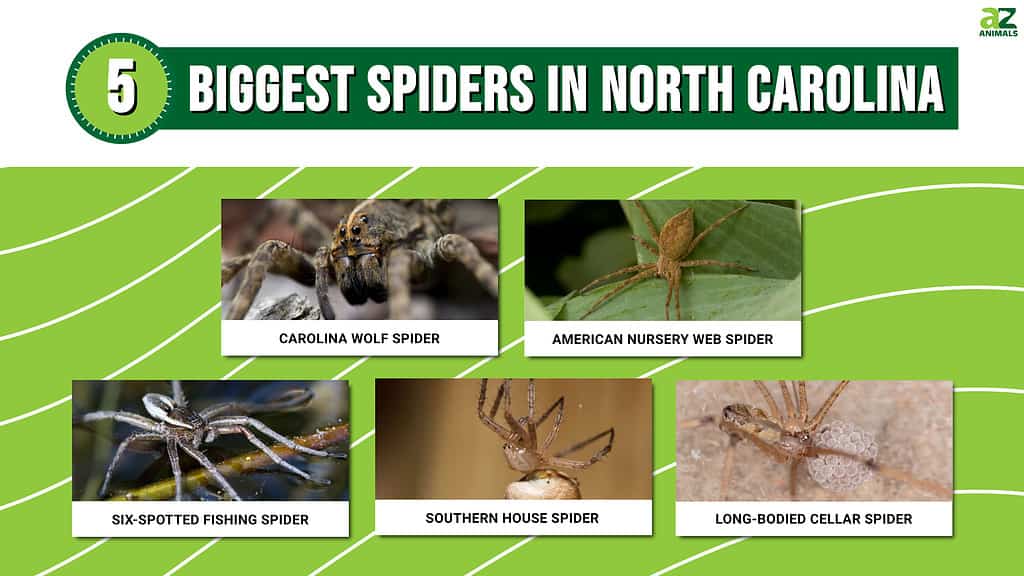
What Are the Biggest Spiders in North Carolina?
It’s important to know the biggest spiders in North Carolina for the simple fact that identifying a creature can make you act rationally around them. That’s why we’re going to spend time describing five of the largest species of spider that you’ll encounter in the state.
We’ll describe them to you, show you what they look like, mention their size, and tell you if they can be dangerous to a human being. Without further ado, let’s start looking at some cool spiders!
5. Long-Bodied Cellar Spider
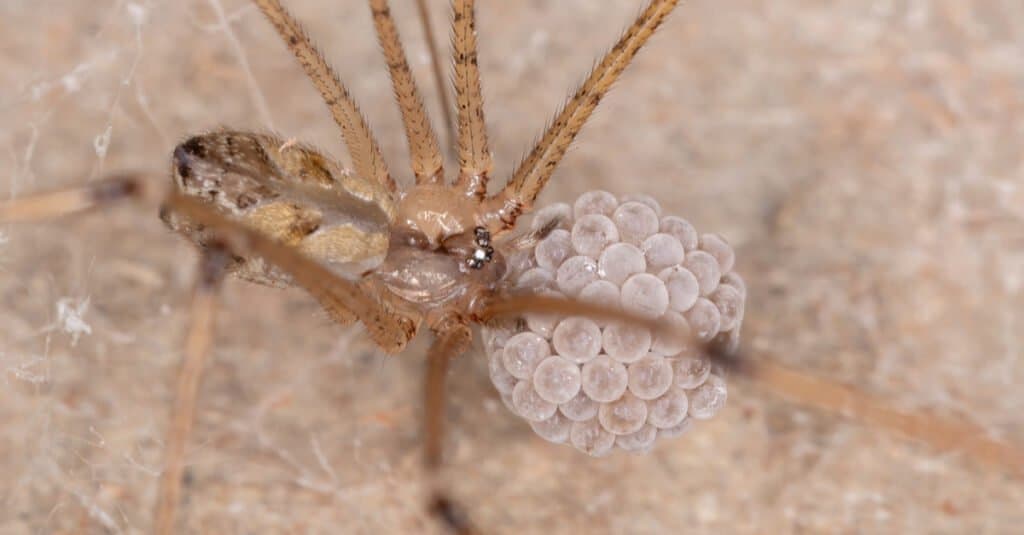
Cellar spiders look scary, but they’re harmless.
©iStock.com/ViniSouza128
| Scientific Name | Size | Danger to Humans |
|---|---|---|
| Pholcus phalangioides | 1-2 inches | A bite may cause a mild, short-lived burning sensation. |
Cellar spiders get a bad reputation due to urban legends and their frightening looks. These spiders have long, thin legs, a translucent look to their bodies, and a range in color from light brown to grayish brown. They may have dark markings on their cephalothorax as well. Some people call these spiders the daddy long legs, but that name is applied to other spiders as well as the arachnid called the harvestman.
Cellar spiders have enough venom to dispatch their prey, but it won’t kill humans. In fact, a bite from one of these spiders would only leave you with a burning sensation and a small mark. Still, it’s a good idea to leave these spiders to their own devices to avoid any harm.
4. Southern House Spider
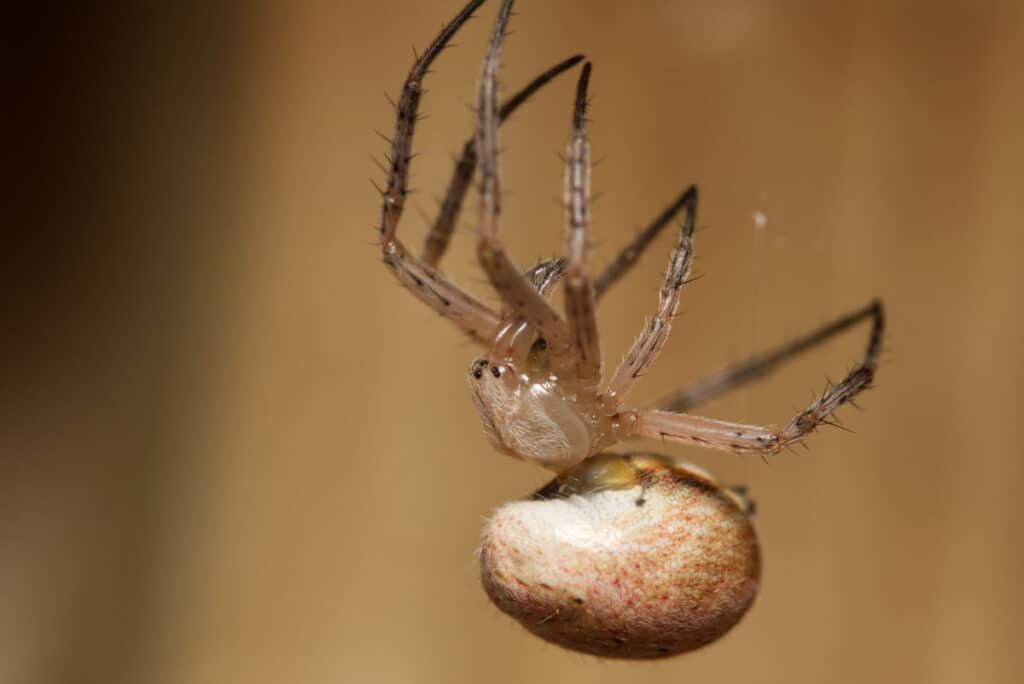
Southern house spiders often get mistaken for brown recluses due to their similar bodies.
©Kala Stuwe/Shutterstock.com
| Scientific Name | Size | Danger to Humans |
|---|---|---|
| Kukulcania hibernalis | 0.75-2 inches | Their bites can cause minor pain that diminishes over a day or two in rare cases. |
Some people see the long legs, brown color, and body shape and assume this is a brown recluse. Fortunately, this is not one of those spiders, but you shouldn’t try to make friends with this one, either. If you’re not certain what you’re looking at is not a brown recluse, don’t approach the spider, even to kill it, without an overabundance of caution.
Southern house spiders are often found in homes where they will build small webs across cracks and crevices. It’s possible to encounter these spiders in your home because their vision is so poor that they can run across a human without knowing it.
If you do manage to get bitten by one of these spiders, you’ll usually experience minor pain that goes away quickly. In rare cases, these spiders can cause pain that lasts a few days.
3. Six-Spotted Fishing Spider
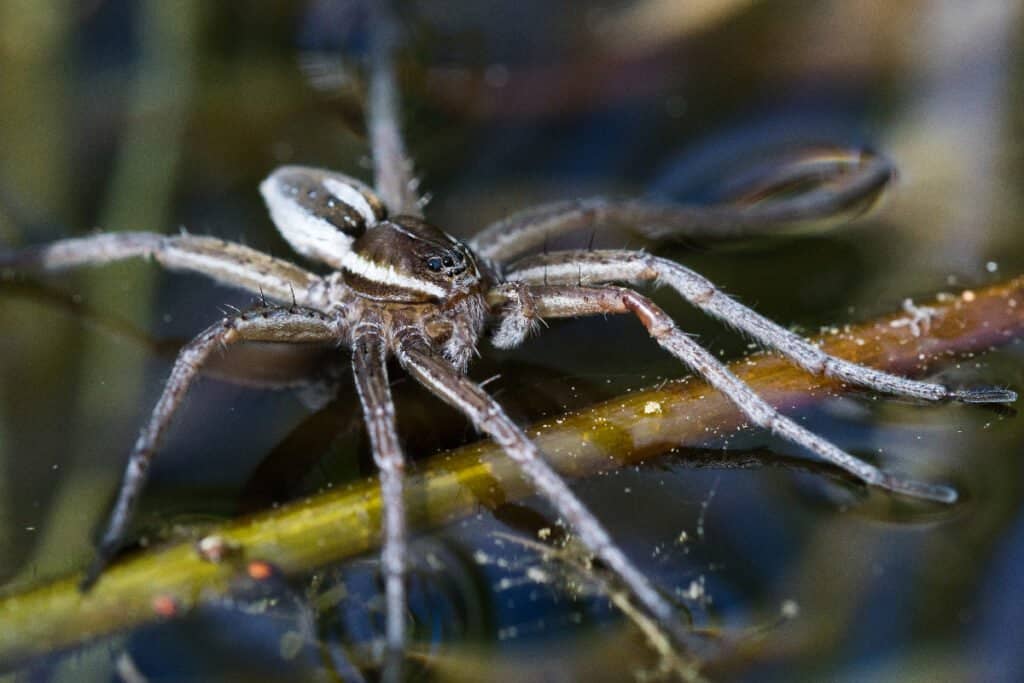
The six-spotted fishing spider can catch fish more than five times its size.
©Jukka Jantunen/Shutterstock.com
| Scientific Name | Size | Danger to Humans |
|---|---|---|
| Dolomedes triton | 0.35-3 inches | Bites will induce swelling and some pain similar to a bee sting. |
You may know this spider by the name “dock spider” in addition to its typical name. These spiders often spend time around water where they hunt their prey. Unlike many other spiders, the six-spotted fishing spider can run across water and can even dive under the water’s surface to get away from predators and capture their prey.
These spiders have beautiful colors and patterns. Typically, they have a brown, dark brown, or reddish-brown body. They’ll usually have a light-colored stripe on either side of their cephalothorax and abdomen, a reddish-brown line beginning at the eyes and ending at the abdomen, and several white spots on the abdomen.
However, six spotted fishing spiders get their name from the six dark spots on their underside, something you’re not likely to see. These spiders are large, and that can be alarming. Yet, their bites aren’t too bad. A bite from this fishing spider will feel like a bee sting.
2. American Nursery Web Spider
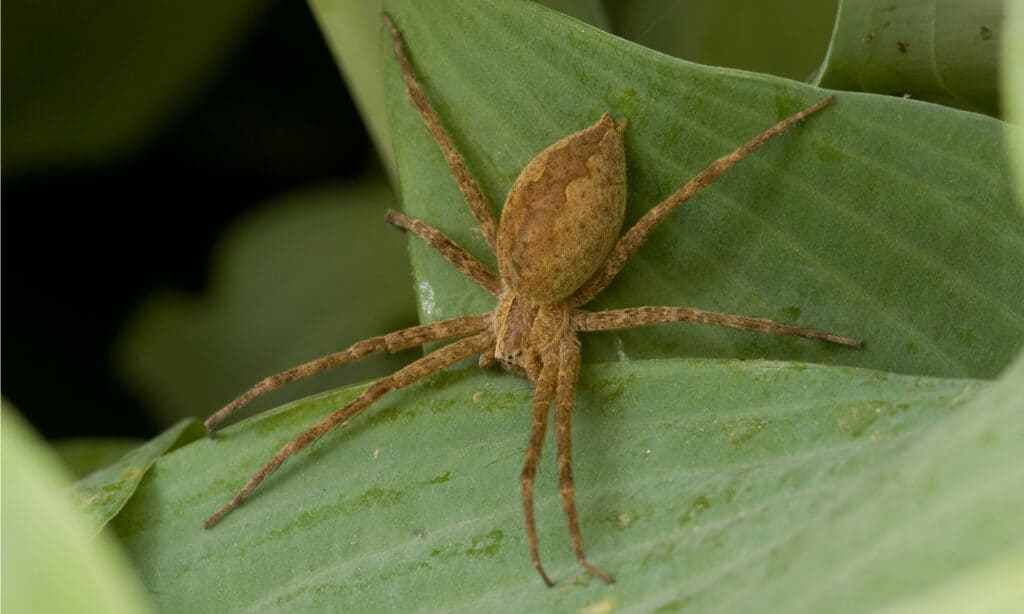
Nursery web spiders are known for being sexually cannibalistic!
©SDeming/Shutterstock.com
| Scientific Name | Size | Danger to Humans |
|---|---|---|
| Pisaurina mira | 1-3 inches | Delivers a bite that is mostly harmless to humans, with pain and swelling common. |
The American nursery web spider is an interesting creature as well as one that can get quite large. These spiders are usually spotted living in tall vegetation and in wooded areas. You can also find them in and around your home, especially if you have a lot of bushes and shrubs.
These arachnids usually have a light brown body with a ragged, irregular dark brown stripe running down the entire length of the body. This pattern is the thickest on the spider’s abdomen. The border between the dark brown pattern and the rest of the body may appear white or light-colored.
American nursery web spiders are well-known for two reasons. First, the females try to eat the males after mating. They’re not always successful in that endeavor, though. Also, the female will build a web to fit her eggs into when they’re close to hatching, hence the nursery name. Their bites cause some pain and swelling, but they’re mostly harmless to humans.
1. Carolina Wolf Spider
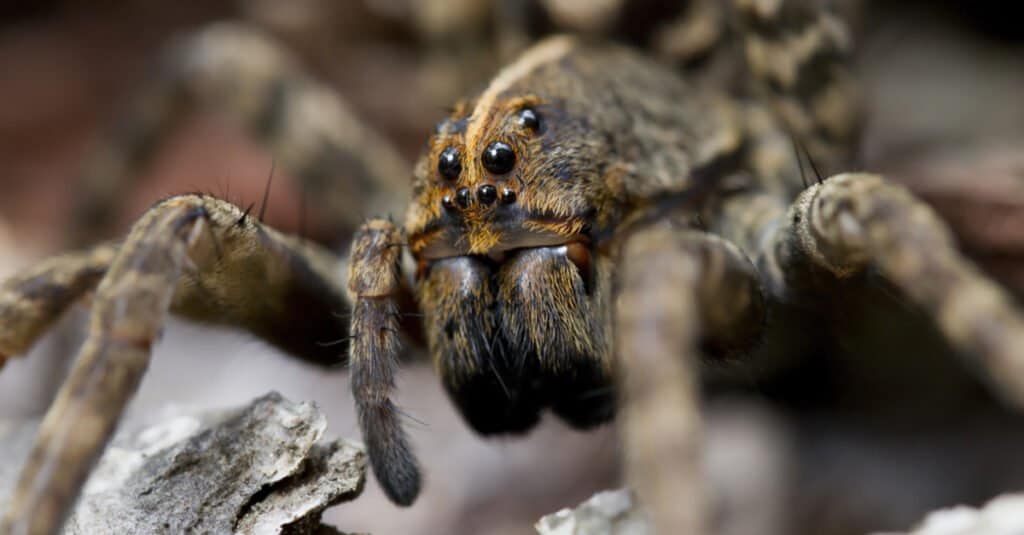
The Carolina wolf spider is the largest in North Carolina.
©Will E. Davis/Shutterstock.com
| Scientific Name | Size | Danger to Humans |
|---|---|---|
| Hogna carolinensis | 2-4 inches | The bite from this spider causes local pain and swelling. |
The Carolina wolf spider is among the biggest spiders in North Carolina, and it’s the largest of all wolf spider species in the U.S. This spider can measure up to 4 inches in length when you account for its long legs.
This wolf spider can be brown, dark brown, or even black in color. It has light coloring on the sides of its cephalothorax and a stripe that runs from the eyes down the center of the cephalothorax.
Males can have orange hairs on their bodies, and the females of this species are known for carrying their young on their backs. That makes them look even larger and scarier.
These spiders live in areas with adequate ground cover, like tall grass, trees, and other plants. Yet, they often make their home in a manmade structure. They are ambush predators that chase and kill their prey, often waiting in a makeshift burrow to strike. Their bites are painful and swell up, but they’re usually harmless.
Sometimes, a person can have adverse effects from these bites from allergies. That can cause dizziness, nausea, headaches, swelling, and infections.
Even though the biggest spiders in North Carolina may look formidable, they’re usually not dangerous. That doesn’t mean no spiders pose a threat to your health in this state, though. You need to watch out for the black widow and brown recluse, both of which can issue a very harmful or even fatal bite.
You also need to watch out for the yellow sac spider and the false widow too. Be respectful of these creatures, keep your distance, and you should be fine.
Summary of the 5 Biggest Spiders in North Carolina
| Rank | Common Name | Scientific Name | Size in Inches | Bite Danger to Humans |
|---|---|---|---|---|
| 1. | Carolina Wolf Spider | Hogna carolinensis | 2-4 | Local pain and swelling |
| 2. | American Nursery Web Spider | Pisaurina mira | 1-3 | Mostly harmless; pain and swelling |
| 3. | Six-Spotted Fishing Spider | Dolomedes triton | .035-3 | Swelling and some pain similar to a bee sting |
| 4. | Southern House Spider | Kukulcania hibernalis | 0.75-2 | Rare, but possible, minor pain |
| 5. | Long-Bodied Cellar Spider | Pholcus phalangioides | 1-2 | Mild, short-lived burning sensation |
The photo featured at the top of this post is © Will E. Davis/Shutterstock.com
Sources
- Spider Identification (1970) spiderid.com/locations/united-states/north-carolina/
- University of Wisconsin Milwaukee (1970) uwm.edu/field-station/nursery-web-spider/
- University of Wisconsin Milwaukee (1970) uwm.edu/field-station/6-spotted-fishing-spider/
- Healthline (1970) healthline.com/health/wolf-spider-bite
Thank you for reading! Have some feedback for us? Contact the AZ Animals editorial team.






